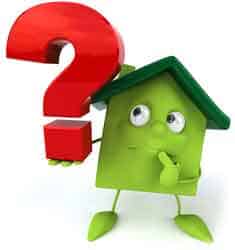 Green home features are being discussed in lots of forums online and offline. One of the hottest topics is the lack of recognition of green home features in appraisals, which is a huge issue for homeowners and builders looking for construction financing.
Green home features are being discussed in lots of forums online and offline. One of the hottest topics is the lack of recognition of green home features in appraisals, which is a huge issue for homeowners and builders looking for construction financing.
There are lots of players involved with different goals. Government agencies like the EPA are promoting green home features to lower energy consumption. The construction industry is developing green certification programs to standardize building codes, products and more. The real estate industry is providing realtor education and updating their MLS systems and home appraisers appear to be caught in the middle, because their their process requires them to value homes based on comparable sales … the proverbial which came first, the chicken or the egg?
What's fascinating and confusing for homeowners — each group is focusing on a subset of what makes a green home. For this article, we've captured what various groups have identified as green home features, along with some background on who they are and what they're trying to accomplish.
Listing these green home features is step 1. It helps homeowners start their research for products but understand different manufacturers are using different technologies in their products, i.e. why there aren't standards for CFL and LED light bulbs. Life isn't as simple as when cars came to market and your only option was a black Model Ford, or the original black phone. To illustrate, spray foam insulation is listed below but there are 2 kinds — open cell foam that stops air flow and yet, it's permeable to moisture while closed cell foam stops air and moisture.
The second challenge with evaluating green home features is there aren't any tools to measure cost savings, as ultimately we want to adopt these new green home features to save money, and yes lower our impact on the environment. We all have to start somewhere though, so best of luck going green!
Green Home Features that Save Energy
Americans are aware that energy costs are rising, and maybe Houston homeowners are more sensitive as their city is heavily involved in the oil industry. When the National Association of Realtor's profile of home buyers and sellers said 43% of buyers considered home heating and cooling costs very important (more on how a green home can save energy), they realized they needed to respond. They're working on education programs for their realtors and updating their Multiple Listing Service (MLS) to reflect the following green home energy features, so realtors and prospective buyers can find homes with the features they want.
|
|
What surprised me was the MLS will start listing the different types of insulation (read Insulation 101) now available, so buyers will need to understand the benefits of different types of insulation, how much is needed and where it's needed, i.e. insulated doors are listed.
Green Home Features that Conserve Water Use
A group of green home builders in Raleigh, NC worked with their peers to develop their green MLS, and they looked at more than energy efficiency. They followed the outline for green home certification programs that cover conservation in land use, energy efficiency, water efficiency, resource (materials used to build a house) efficiency, indoor environmental quality and homeowner education (are green home features documented).
|
Green Home Features that Protect Indoor Air Quality
The input sheet for Raleigh, NC multiple listings listed the following items for indoor environmental quality:
|
Want to learn more about the green home appraisal and financing issues that prompted this article? Click over to one of the best, although very technical, green home forums online — the GreenBuildingAdvisor.com.




Leave a Reply